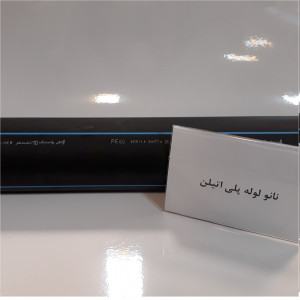| Looleh Gostar Khademi |

| Registration Date | 3 Jul 2021 |
| Revision Date | 3 Jul 2021 |
| Share |
Construction Structural Materials
Polyethylene pipeHigh resistance to heat and cold (from 80 degrees to -20 degrees Celsius) Resistance to sunlight, infrared and ultraviolet rays Outstanding resistance to vibrations produced by earthquakes No pathogenicity due to special chemical properties Resistant to rusting and scaling Extended service lifetime No necessity for paint and coating One of the most effective ways to improve the properties of polyethylene is to use nanotechnology. Therefore, in order to solve the creep problem in polyethylene pipes, adding nanoparticles and their uniform distribution in the polymer substrate will lead to improved strength and increase long-term creep in the pipes.
Polyethylene is one of the most extensively applied polymers, which has a large portion in the plastics manufacturing due to its several benefits such as accessibility, laid-back processability, organic chemical resistance, desired mechanical and physical properties, rational price and applicability in numerous fields. In addition to all the benefits stated, low creep resistance is one of the drawbacks of this polymer. Creep can be defined as a time-dependent deformation that is considered as an imperfection in the long-term behavior of polymeric materials. In the case of creep, when the polymers are subjected to a constant load less than the final strength of the material, an instantaneous deformation occurs in the polymers and they become coiled; As the load continues to apply and the longer load is applied, a permanent deformation occurs in the material. One of the most effective ways to improve the properties of polyethylene is to use nanotechnology. Therefore, in order to solve the creep problem in polyethylene pipes, adding nanoparticles and their uniform distribution in the polymer substrate will lead to improved strength and increase long-term creep in the pipes.